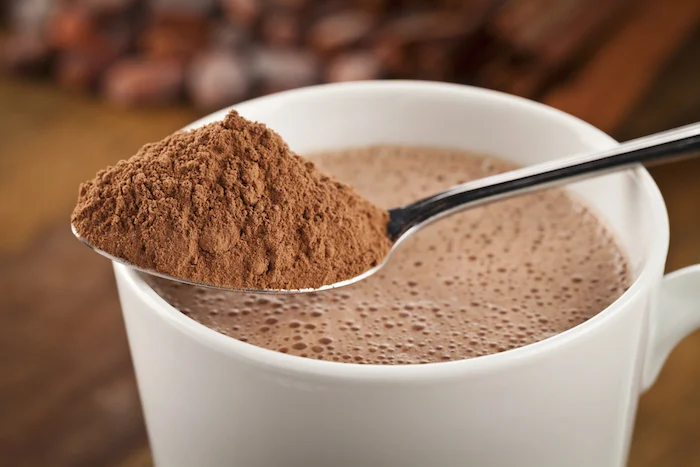Chocolate is one of the most popular sweets in the world.
It is made from cacao beans.
They are also called cocoa beans.
Cacao beans grow on cacao trees.
The trees grow where the weather is hot.
Where does chocolate come from?
Cacao trees grow in Africa, Madagascar, Central and South America, and parts of Asia where the weather is hot. The trees can grow to be 200 years old, but only produce cacao beans for about 25 years.
Raw cocoa beans ©iStock
Cacao, or cocoa, beans grow inside large pods that are picked and left to dry in the sun. The dry beans are shipped to places where chocolate is made and delivered to factories.
Processing begins in a factory. At a factory, the cocoa beans are cleaned and roasted and the shells are removed.
Chocolate is stirred in large vats in a chocolate factory. ©iStock
The roasted beans are cracked and the outer shells blown away, leaving broken bits of the beans, called nibs.
The nibs are crushed and ground into a thick paste called chocolate liquor.
Some of this is put into a press that removes cocoa butter, which will be used in making chocolates, and the remains are ground into a powder and packaged as cocoa.
Some is mixed with cocoa butter, sugar and condensed milk to make a paste. The paste passes through rollers to make it smooth, then it is stirred for at least six hours.
The liquid chocolate is weighed and poured into moulds. Flavoured centres or nuts and fruit are added at this stage. The liquid chocolate is poured into moulds to set.
Chocolates ©iStock
Chocolates can be made into blocks, eggs, or any shape, depending on the moulds. The moulds are allowed to cool, the chocolates removed and then wrapped in foil or decorated.
History
Cacao beans were mixed with spices and made into a bitter, spicy drink by the Inca, Aztecs and Maya who lived in ancient times in Mexico and Central America. They called the drink chocolatl and used it as part of celebrations. They believed that the beans had magical powers.
Chocolatl became a popular drink in Europe, especially after it had some sugar added to it. Chocolate houses were soon opened in European cities in the 1600s. But it was expensive and only the rich could afford to drink it.
For hundreds of years, people drank chocolate, but they didn't eat it until the first chocolate bars were made. In 1828, a Dutchman, Casparus Van Houten, invented powdered cacao and soon after an Englishman, Joseph Fry, added melted cacao butter to the Dutch cacao to produce a paste. This could be made into the first bars of solid chocolate. Today, Fry’s Chocolate Cream Bar is still available even though the company is now owned by Cadbury.
In 1879, Rodolphe Lindt discovered that adding milk or cream improved the taste, and invented a machine which made smoother milk chocolate that tasted better.
It’s a good idea to get information from more than one source!
Read more information about chocolate:
https://planbee.com/blogs/news/chocolate-facts-for-ks2-children-and-teachers




